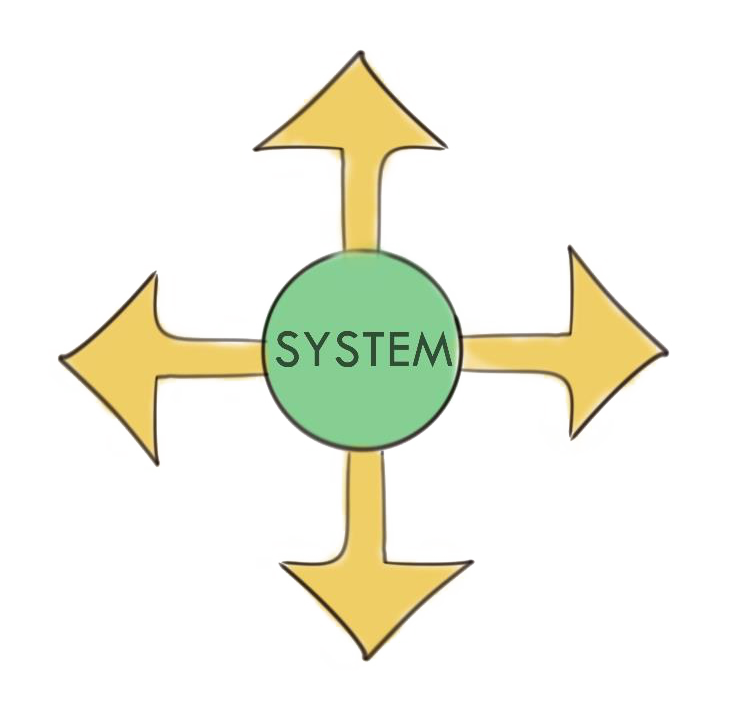1. Problem orientation
Initial framing of the problem to be solved. Identification of the current system configuration (in terms of actors, technologies, institutions).
At a glance
Goal
Formulation and specification of a problem to be addressed; identification of key (sustainability) challenges
Input
Initial problem formulations by different stakeholders.
Methods
Analysis of trends, sustainability assessment of current solutions; consensus-building / participatory methods to come up to a joint understanding of a problem; analysis of different framings of a problem
Relative workload
Medium
Output
A common understanding of the problem among all participants, alongside the timeframe for the study and associated limitations.
Steps
1. Identify how different stakeholders frame the problem and what the differences are.
2. Develop a common understanding of the problem to be used on the following steps. Identify relevant sustainability challenges
3. Identify the associated sociotechnical system (in terms of actors, technologies, institutions).
4. Identify limitations for the PB project (e.g. time, resources, possibilities for stakeholder involvement, competences available) and implications for problem solving (i.e. the scale and the parts of the problem to be considered, and the timeframe for problem solving).
Consider questions such as:
- How does the system under study look like in the present moment of time?
- What are the main system/problem characteristics?
- What are the current main challenges?
- What is the business-as-usual scenario and its probable consequences?
- How do different actors frame the problem?
- What are the limitations for problem solving/strategic planning process, e.g. time, resources available, possibility to involve stakeholders? (For your particular project.)
Keep in mind
Any problem formulation brings with it different limitations and will therefore have implications moving forward in the process. Hence, at this initial stage of the process, it is important to keep a relatively open/broad problem formulation in order to not exclude possibilities moving forward and to not be locked in by a particular solution of the problem or perspective on it.
Different stakeholders are likely to experience and recognise different aspects of a problem, making it important to look for input from various sources.
Data collection
Since the focus of this module is to gain an initial understanding of the problem to be addressed in the project, the data collection should cast a wide net rather than going in depth. Relevant literature could include grey literature such as public investigations and official reports on the situation, as well as more general scientific literature. In addition, it is possible that reports in the media can shed light on some aspects of the situation that might not being included in more official publications. However, the most important data source for this module could be a direct input from different stakeholders – see the next section on Participatory element.
For more information about data collection, see participation and context.
Participatory elements
As stakeholders have unique insights about the sociotechnical system under study and together may contribute towards a rich and nuanced understanding of the problem, it is likely meaningful to involve them already when familiarising with the problem. However, to avoid causing stakeholder fatigue, it is essential to already at this stage create a first draft plan for stakeholder engagement.
For more information about participatory elements, see participation and context.
Examples
The heating sector
When familiarising with the problem/situation/challenge, it is crucial to recognise both general and context specific aspects. For instance, some key sustainability challenges for the heating sector that have been identified by researchers include:
- Decarbonisation
- Increasing energy security
- Energy efficiency
- Quality and affordability of heating services
- Minimising environmental and health impacts caused by polluting emissions and other factors.
Taken together, some possible problem formulations for the heating sector include:
- Comfortable indoor climate in 2050 vs
- Heat supply in 2050 vs
- The heating sector in 2050
What can be noted here is how the different problem formulations imply different system boundaries and focus. For example, “comfortable indoor climate” can be achieved through various means, including heating but also passive house solutions or even a change in perception of what constitutes ‘comfortable’. However, if the problem formulation is centered on “heat supply”, it is already suggested that the study is about some sort of heat provisioning infrastructure. Explicitly including “the heating sector” as a key aspect of the problem formulation may in turn suggest a large scale, industry focus. Of course, none of the suggested problem formulations are inherently wrong.


Mobility/transportation system
In a similar fashion, possible problem formulations for the mobility/transportation system include (but are not limited to):
- People and goods mobility in 2050 vs
- Transport infrastructure in 2050
Whereas “transport infrastructure” (rightly or wrongly) might bring with it connotations of contemporary top-down implementation of large-scale solutions, “people and goods mobility” suggest a degree of openness as to how the movement (of people and goods) can be made to happen.
